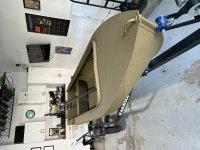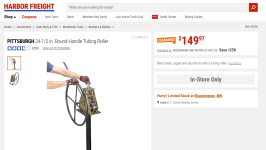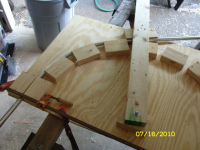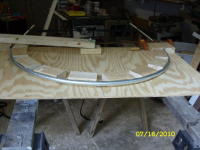Aluminum being easier to bend would be entirely dependent on the specific type (recipe)of aluminum that has been chosen.
Of the grades listed below, I suspect the material Mark is using to be one of these 3 choices; 6061, 6063, or 3003.
Grade 7075 is very common in small diameter tubing and is the hardest to bend for any given diameter.
Grade 6061 is the grade most commonly used and encountered by the home hobbyist/consumer. High strength & good welding.
Not good formability - If formed, needs a very gradual radius. This is where the process of "rolling the bend" excels. When something is bent around a jig, the piece goes directly from a straight condition to a bent condition of the desired radius. When the same piece is "roll bent", the radius starts out as a very large radius, putting very little bend /stress into the tubing, during a single pass. Each subsequent time the tubing is passed thur the rollers, the bend radius is reduced, until the desired radius is reached. This process inherently is less stressful to the tubing, reducing the chance of the tube cracking or kinking during the process.
- 7075
This alloy has a high strength-to-weight ratio and is resistant to corrosion. It's often used in aerospace applications because it can withstand cyclic loading.
- 6061
This heat-treatable alloy is lightweight, weldable, and corrosion resistant. Not good formability - If formed, needs a very gradual radius. It's easy to work with and can be cut, bent, drilled, and more.
- 6063
This alloy is often used for extrusion and can produce a high quality finish. It's used for structural pipes and tubes, seamless tubing, and heat-sinks.
- 3003
This alloy contains a small amount of magnesium, making it up to 20% stronger than pure grade and 2011.
- 5052
This alloy has a good strength-to-weight ratio and is easy to machine. It's often used for CNC.
- 1100
This alloy is made of pure commercial aluminum and has good electrical and thermal conductivity. It's often used for heat sinks and heat exchange equipment.
Compared to aluminum, mild steels are very tolerant bending and forming. The various grades of aluminum can be a tricky animal.






